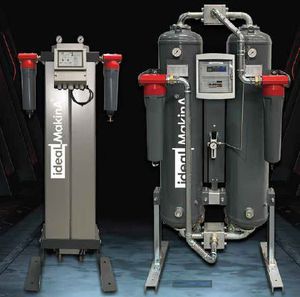
- Products
- Catalogs
- News & Trends
- Exhibitions
Adsorption with heat compressed air dryer IM-BHRD series

Add to favorites
Compare this product
Characteristics
- Technology
- by adsorption with heat
Description
Compressed air is used in almost all areas of industrial manufacturing as a source of energy or processing. Compressed air needs to be dry, oil free and clean to prevent costly production downtimes and losses in the production quality. The atmospheric air drawn in contains harmful substances, dirt particles and moisture in the form of water vapor, which condenses out in compressed air pipes and can lead to considerable damages (corrosion, freezing etc.).
Beneath compressed air refrigerant dryer, adsorption dryer represents the most common drying method for compressed air. Maximum efficiency and the highest operational safety, coupled with low operational costs are attributes that convey the advantages of the adsorption dryer. State of the art technology and selected materials are the basis for high operational safety.
Adsorption dryers are made of two – in some applications more – compressed air vessels filled with desiccant. Whilst one vessel is drying the incoming compressed air, the other vessel is regenerated.
Within the range of adsorption dryers, we differ between heatless regenerated dyers and heat regenerated dryers. While heatless dryers are regenerated by a partial flow of more than 15 % of the dried compressed air, heat regenerated adsorption dryers generally manages the regeneration process without compressed air consumption.
Therefore, heat regenerated adsorption dryers are much more economical as their energy requirements for regeneration is much lower than those of heatless regenerated adsorption dryers despite using heater and blower for regeneration.
*Prices are pre-tax. They exclude delivery charges and customs duties and do not include additional charges for installation or activation options. Prices are indicative only and may vary by country, with changes to the cost of raw materials and exchange rates.


